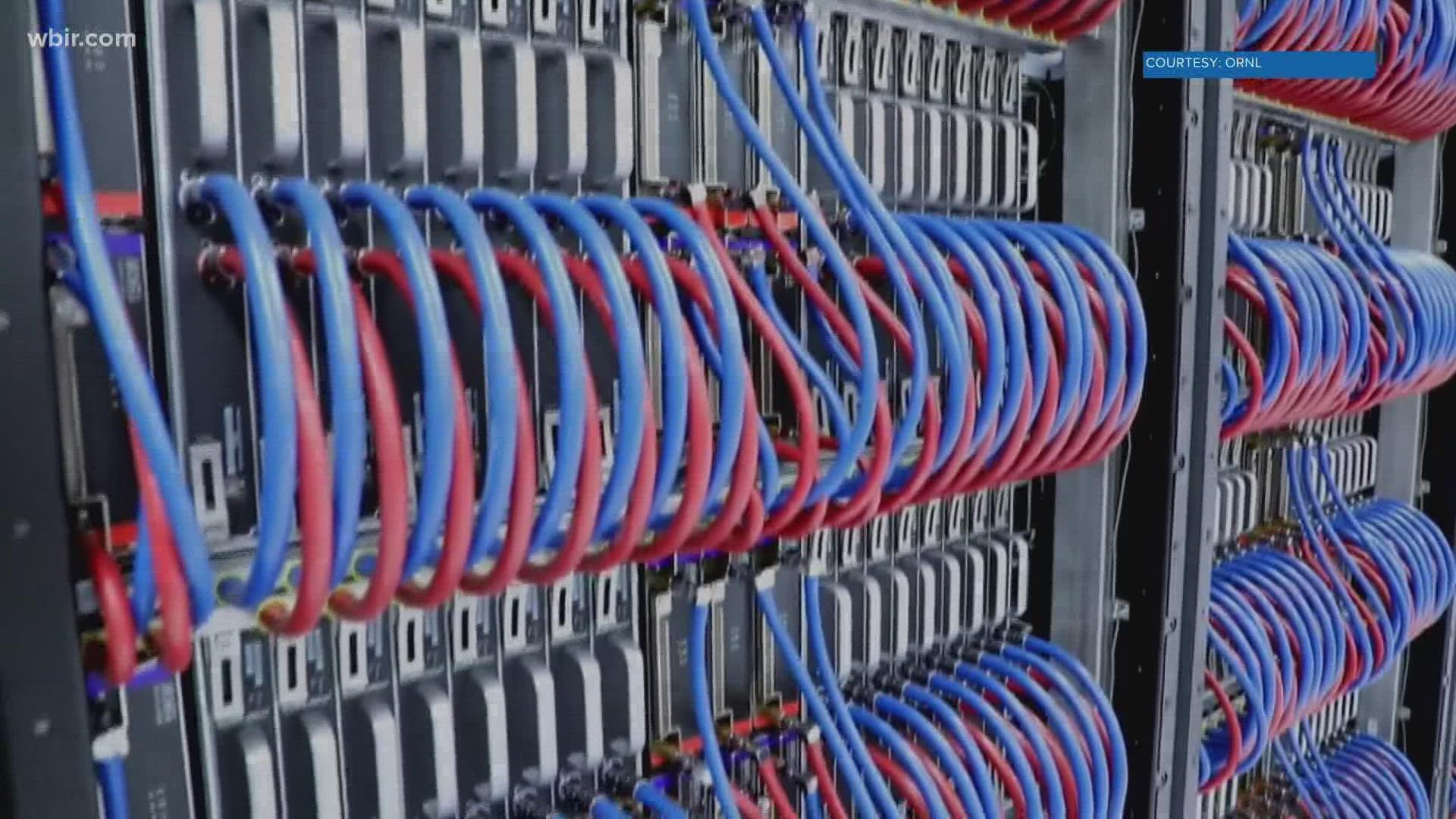OAK RIDGE, Tenn. — The Oak Ridge National Laboratory unveiled a gamechanger in the supercomputing world on Monday: its newest supercomputer has become the first in the world to formally set a key milestone that will allow it to drastically speed up and solve some of the most complex calculations facing the scientific community.
ORNL's Frontier supercomputer has been in the works for a few years. It was installed in 2021 and is nearly ready to begin its mission.
"When researchers gain access to the fully operational Frontier system later this year, it will mark the culmination of work that began over three years ago involving hundreds of talented people across the Department of Energy and our industry partners at HPE and AMD,” Jeff Nichols, ORNL Associate Lab Director for computing and computational sciences, said. “Scientists and engineers from around the world will put these extraordinary computing speeds to work to solve some of the most challenging questions of our era, and many will begin their exploration on Day One.”
How powerful is Frontier? To put it into perspective, it's roughly seven times more powerful than ORNL's previous record-setting supercomputer, Summit, which clocked in at 148.6 petaflops during the most recent Top500 benchmark. In 2018, Summit was named the world's fastest and smartest supercomputer -- but after four years it is now the fourth-fastest in the world.
Frontier became the first supercomputer of its kind to formally break a benchmark known as the "exascale," which if you remember your metric prefixes and scientific notation (kilo, mega, giga, tera, peta) -- "exa" is the next step up the scale after "peta."
Frontier's Top 500 benchmark reached 1.102 exaflop/s, which means it can do roughly 1.1 quintillion calculations every second. ORNL said it would take the entire population of the Earth more than four years to perform the same number of calculations Frontier can do in a single second.
So how is all this power used in a practical way? ORNL said there are already a few projects lined up to utilize the Frontier's rapid computing power, such as a project to simulate plasma and laser-plasma physics in order to test new cancer therapies, or using it to reproduce data on our own galaxy to make detailed astrophysical predictions. As exascale supercomputers become more common, it will also mean advances in other areas, such as more detailed and accurate weather forecast and climate models over longer periods of time.
Even though Frontier led the U.S. to be the first to formally break the exaflop ceiling on the world stage, Engadget reported China was rumored to have possibly achieved the key benchmark in 2021 with at least two supercomputers. However, China has kept any formal details or official benchmarks of those systems under wraps.

